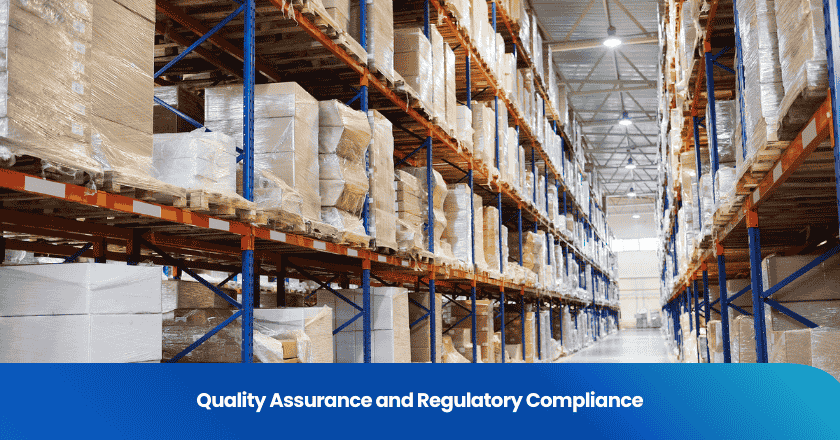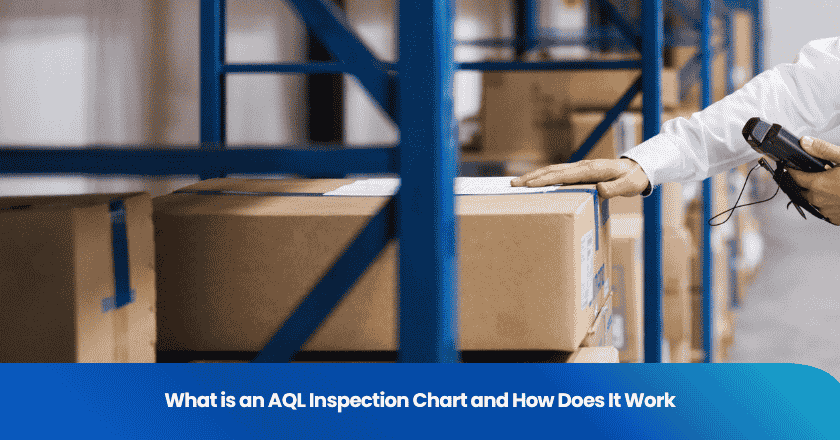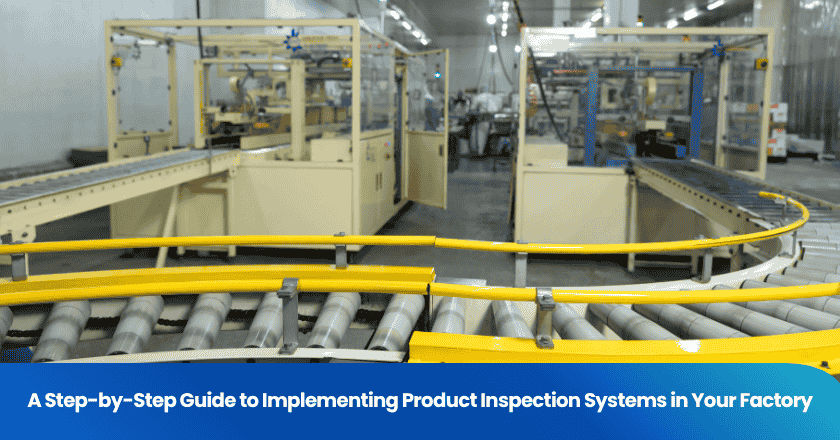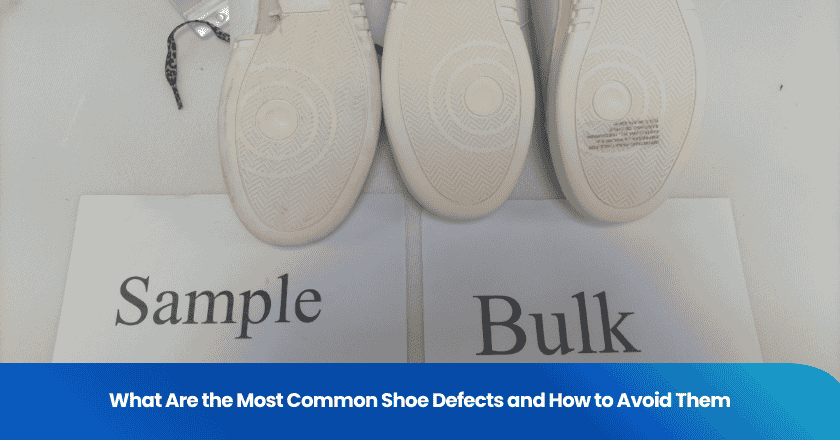
Quality assurance and regulatory compliance help you deliver reliable products and meet legal standards. You protect your business when you maintain high quality and follow regulatory rules. Neglecting either can lead to lost trust, legal penalties, and dissatisfied customers.
Consider these risks:
- 71% of customers are unlikely to buy from a business that loses their trust.
- A single bad experience can lead to 80% of customers switching brands.
You strengthen quality and regulatory compliance by setting clear objectives, monitoring data, and staying informed about regulatory changes. Reflect on your current practices to avoid common pitfalls and improve compliance.
Key Takeaways
- Quality assurance ensures products meet established standards, preventing defects and promoting continuous improvement.
- Regulatory compliance involves following laws and guidelines relevant to your industry, protecting your business from legal penalties.
- Integrating quality assurance and regulatory compliance creates a culture of excellence, enhancing customer trust and satisfaction.
- Regular audits and employee training are essential for maintaining compliance and adapting to regulatory changes.
- Neglecting quality and compliance can lead to lost trust, legal issues, and significant financial losses.
Definitions
Quality assurance
Quality assurance refers to the systematic activities you implement to ensure products or services meet established standards. You design processes to prevent defects and promote continuous improvement. In manufacturing, you might use frameworks like ISO 9001 or Six Sigma to guide your efforts. In healthcare, standards such as ISO 13485 or HIPAA help you maintain high levels of quality. You focus on building quality into every step, from planning to documentation, so you can deliver reliable results and earn trust.
Quality assurance is not just about catching mistakes. You create systems that make excellence part of your daily operations.
Regulatory compliance
Regulatory compliance means you follow all laws, regulations, and guidelines relevant to your industry. You ensure every aspect of your business meets the requirements set by authorities. In regulated industries, such as pharmaceuticals, you must maintain sanitized facilities, train staff, and document procedures thoroughly. Agencies like the FDA or international bodies set standards you must meet to operate legally. You also need to stay updated on regulatory changes to avoid penalties and protect your reputation.
In regulated industries, regulatory compliance is essential for legal operation and public safety.
Quality compliance
Quality compliance combines your internal standards with external regulatory requirements. You develop policies and procedures to ensure products consistently meet quality criteria. You go beyond minimum legal requirements to foster a culture of excellence. In financial services, you might create policies to address risks, train employees, and monitor compliance activities. You align your reporting and monitoring with both organizational goals and regulatory expectations. Quality compliance demonstrates your commitment to high-quality products and operational excellence.
- You develop policies to address risks and regulatory requirements.
- You establish procedures for reporting and resolving compliance issues.
- You train employees on compliance policies and procedures.
- You monitor the results of compliance activities.
Comparing and connecting the concepts
| Aspect | Quality Assurance | Regulatory Compliance | Quality Compliance |
|---|---|---|---|
| Definition | Focuses on preventing problems and improving excellence. | Adherence to laws and regulations set by authorities. | Internal policies ensuring products meet quality criteria. |
| Purpose | Builds quality into processes by design. | Ensures legal requirements are met. | Aligns with regulations while promoting operational excellence. |
| Focus | Continuous improvement and risk management. | Compliance with legal standards. | Commitment to high-quality products beyond legal minimums. |
| Framework | Involves planning and documentation to prevent defects. | Governed by external regulatory bodies. | Based on internal standards and procedures. |
| Outcome | Drives operational excellence and builds trust. | Ensures legal operation of the business. | Demonstrates capability to meet quality standards. |
You see clear differences among these concepts. Quality assurance focuses on building quality into your processes. Regulatory compliance ensures you meet legal requirements. Quality compliance bridges both, aligning your internal standards with regulatory expectations. In regulated industries, you must integrate all three to achieve operational excellence and maintain trust.
Importance
Business impact
Quality assurance and regulatory compliance shape your business operations and long-term success. When you prioritize quality, you reduce service and repair costs, improve customer satisfaction, and protect your brand reputation. You also avoid the high costs that come from external failures, such as warranty claims or product recalls. These costs can quickly add up and harm your financial health.
You can see the direct link between strong compliance and profitability.
The following table highlights how governance and transparency support your bottom line:
| Aspect of Compliance | Impact on Profitability |
|---|---|
| Governance Structures | Enhances financial performance and transparency |
| Transparency | Stabilizes capital market growth and improves market efficiency |
| Profit Health | Provides a framework for evaluating corporate financial performance |
You also benefit from policies that emphasize transparency and strong governance. These measures protect investor interests and foster a stable market environment. In industries like pharmaceuticals, quality and regulatory compliance help you maintain product safety and meet strict standards, which is essential for market access and growth.
If you neglect quality assurance, you may face increased complaints, higher warranty costs, and lost sales. Poor quality can damage your brand image and make it difficult to retain customers. You risk losing trust, which is hard to rebuild.
Legal and reputational risks
Regulatory compliance protects you from legal penalties and reputational harm. Failing to meet regulatory standards can result in fines, shutdowns, or loss of licenses.
The table below outlines common consequences in regulated sectors:
| Consequence | Description |
|---|---|
| Regulatory action | Non-compliance can lead to fines, production shutdowns, or loss of licenses due to strict standards enforced by regulatory bodies. |
| Reputational damage | Mistakes can escalate into public relations crises, making it hard to regain consumer trust. |
| Operational inefficiencies | Non-conformances can disrupt workflows, increase waste, and add costs, affecting profitability. |
| Product recalls | Recalls are costly in financial terms and can damage brand perception and market share. |
You also face risks such as severed contracts, trade restrictions, and immediate revenue loss. Regulatory breaches can trigger a mass exodus of customers and lower your company’s valuation. According to the World Economic Forum, 25% of a company’s market value links directly to its reputation. In regulated industries, especially pharmaceuticals, quality and regulatory compliance are not optional—they are critical for survival and growth.
Tip: You can protect your business by making quality and regulatory compliance part of your daily operations. This approach builds trust and ensures long-term success.
Implementation
Quality assurance framework
You build a strong quality assurance framework by following structured steps. Start by understanding your organization’s context and defining the scope of your quality management system. Leadership must show commitment and set clear quality policies. Planning involves setting measurable objectives and identifying risks and opportunities. You need to provide resources, ensure staff competence, and maintain effective communication.
The table below outlines the essential components recommended by ISO standards for a quality assurance system:
| Clause | Description |
|---|---|
| Context of the Organization | Understand your organization’s environment and stakeholders. Establish the scope of your quality management system. |
| Leadership | Secure commitment from top management. Define roles and responsibilities. Set a clear quality policy. |
| Planning | Identify risks and opportunities. Set quality objectives. Plan for changes in your quality management system. |
| Support | Allocate resources. Ensure staff competence and awareness. Maintain documented information. |
| Operation | Plan and control operations. Address customer requirements. Oversee design, development, and external providers. |
| Performance Evaluation | Monitor and measure performance. Analyze data. Conduct internal audits and management reviews. |
| Improvement | Address nonconformities. Take corrective actions. Pursue continual improvement. |
You should embed quality assurance best practices into every stage of your operations. Use regular audits and inspections to monitor compliance and identify areas for improvement. Document all processes and results to ensure traceability. Encourage a culture where everyone takes responsibility for quality. This approach helps you meet compliance standards and supports long-term success.
Tip: Involve employees at all levels in your quality management efforts. Their engagement strengthens your quality assurance framework and drives continuous improvement.
Steps for regulatory compliance
Achieving regulatory compliance requires a systematic approach. Begin with a gap analysis to compare your current practices with regulatory requirements. Align your quality management system with recognized standards, such as ISO 13485:2016 for medical devices or similar frameworks in pharmaceuticals. Integrate risk-based thinking to identify and manage potential issues before they escalate.
Follow these steps to strengthen your compliance program:
1. Conduct a gap analysis to identify differences between your current practices and regulatory requirements.
2. Align your quality management system with relevant standards.
3. Implement risk-based quality assurance to address potential risks early.
4. Validate software and processes that cannot be fully verified through inspection or testing.
5. Train your staff and assign clear responsibilities for managing compliance.
You must document every step and maintain records for audits. Regular internal audits and inspections help you stay prepared for external reviews. Training ensures your team understands compliance standards and their roles in maintaining them. This process reduces the risk of nonconformity and supports your certification goals.
Note: Regulatory compliance is not a one-time task. You need to monitor changes in global regulatory requirements and update your processes regularly.
Integrating quality and regulatory compliance
You achieve the best results when you integrate quality assurance and regulatory compliance into a unified system. This integration streamlines your processes, reduces duplication, and ensures you meet both internal and external expectations. Use a risk-based quality assurance approach to identify and address potential issues before they affect your products or services.
The table below highlights effective strategies for integrating quality and regulatory compliance:
| Strategy | Description |
|---|---|
| Risk-Based Quality Assurance Approach | Identify and mitigate risks early. Allocate resources to areas with the highest impact on quality and compliance. |
| Documentation and Record-Keeping | Maintain detailed records to demonstrate compliance and support audits or inspections. |
| Regular Internal Audits and Inspections | Schedule frequent audits to detect discrepancies and ensure ongoing readiness for external reviews. |
| Corrective and Preventive Actions (CAPA) | Investigate root causes of nonconformities. Implement corrective actions to prevent recurrence. |
| Employee Training and Competency | Provide ongoing training to keep staff updated on quality assurance best practices and compliance procedures. |
You should align your quality management systems with both organizational goals and regulatory requirements. Use audits to evaluate your processes and identify gaps. Implement corrective actions promptly to address any issues. Regular training keeps your team informed about quality assurance best practices and compliance standards.
Callout: Integrated quality and regulatory compliance systems help you respond quickly to changes in regulations and market demands. This agility protects your reputation and supports sustainable growth.
By embedding quality and compliance into your daily operations, you create a culture of excellence. You reduce the risk of regulatory penalties, improve customer satisfaction, and strengthen your position in competitive industries like pharmaceuticals. Managing compliance and quality together ensures you meet certification requirements and maintain trust with stakeholders.
Challenges and solutions
Common obstacles
You face several challenges when maintaining quality assurance and regulatory compliance. In industries like automotive, you must manage complex supply chain dependencies. You deal with stringent regulatory requirements and global competition. You also need to comply with various quality standards and handle the consequences of product recalls.
- Complex supply chain dependencies
- Stringent government regulations
- Impact of global competition
- Compliance with various quality standards
- Consequences of product recalls
You often encounter obstacles when trying to meet international regulatory standards.
Maintaining compliance is not just about understanding the regulations—it’s about implementing them effectively across the organization. This often requires significant investments in time, personnel, and financial resources. Compliance departments must be staffed with knowledgeable professionals who can interpret and apply complex legal requirements. Additionally, businesses may need to invest in new technologies or update existing systems to meet the demands of modern regulations.
The financial burden of compliance can be substantial. You must allocate resources for day-to-day compliance activities, employee training, internal audits, and documentation updates. Hidden costs of noncompliance can exceed the expenses of maintaining compliance.
In today’s interconnected world, businesses must ensure that their entire supply chain adheres to regulatory standards. This includes verifying that suppliers and partners comply with labor, environmental, and safety regulations.
Practical solutions
You can overcome these challenges by adopting proven strategies. Start by implementing robust approaches for ongoing regulatory compliance across different markets. Identify and mitigate regulatory risks to sustain international operations. Stay informed about global trends and adapt your compliance strategies.
- Agility in compliance: Conduct continuous risk assessments to track new laws and standards.
- Flexible policies: Update policies swiftly to address regulatory changes.
- Leadership support: Empower teams with resources to adapt quickly.
- Comprehensive compliance program: Establish formal programs with defined policies and oversight.
- Continuous training: Educate employees on regulations and ethical responsibilities.
- Strengthen internal controls: Use checks and balances to ensure consistent compliance.
- Third-party due diligence: Vet vendors and partners to reduce compliance risks.
- Culture of compliance: Foster an environment where compliance is part of daily operations.
- Regular reviews: Align compliance programs with evolving laws and technologies.
- Interactive training: Use workshops and e-learning to engage employees.
- Monitoring systems: Track compliance metrics and conduct internal audits.
- Open communication: Encourage reporting of compliance concerns without fear.
You build resilience by integrating quality assurance and quality compliance into your processes. You use internal audits to monitor performance and identify gaps. You create a culture where quality and regulatory compliance drive operational excellence.
Best practices and tools
Industry standards
You strengthen your quality and regulatory compliance programs by following recognized industry standards. These standards provide clear frameworks for managing quality, ensuring regulatory compliance, and supporting continuous improvement. In the technology sector, you find a range of standards that guide software testing, documentation, and process management.
The table below highlights some of the most widely adopted standards:
| Standard Name | Description |
|---|---|
| ISO/IEC/IEEE 29119 | International standard for software testing, improving quality and efficiency in software processes. |
| IEEE 829 | Framework for creating comprehensive test documentation including plans, designs, and reports. |
| IEEE 1061 | Establishes quality requirements and metrics for software processes and products. |
| IEEE 1059 | Guides Software Verification and Validation plans. |
| IEEE 1008 | Supports proper unit testing practices. |
| IEEE 1012 | Focuses on Verification and Validation of products. |
| IEEE 1028 | Ensures correct execution of software inspections. |
| IEEE 1044 | Classifies various software anomalies. |
| IEEE 830 | Framework for developing system requirements specifications (SRS). |
| IEEE 730 | Deals with software quality assurance plans. |
| IEEE 12207 | Guides software life cycle processes and data. |
| BS 7925-1 | Glossary of Software Testing Terms. |
| BS 7925-2 | Expectations for software component testing. |
For regulatory compliance, multinational organizations often rely on standards that address data protection, security, and transparency. You may encounter the following key standards:
- GDPR: Protects personal data and privacy for EU citizens.
- CCPA & CPRA: Empowers California residents with rights over their personal data.
- SOC 2: Ensures secure handling of data by service providers.
- ISO 27001: Sets requirements for information security management.
- HIPAA: Regulates health information in the US.
- PCI DSS: Protects payment card information.
- SOX: Promotes financial transparency in public companies.
Following these standards helps you build trust, reduce risks, and demonstrate your commitment to quality and compliance.
Tools and resources
You can use a variety of tools and resources to support ongoing quality assurance and regulatory compliance. In manufacturing, statistical tools such as control charts, histograms, and Pareto analysis help you monitor quality trends. Root cause analysis methods like Ishikawa diagrams and 5-Why analysis allow you to identify and address underlying issues. Failure Mode and Effects Analysis (FMEA) helps you assess risks and prevent defects.
Digital quality management systems and advanced measurement equipment, such as coordinate measuring machines (CMM) and optical measurement systems, provide accurate data for decision-making. Quality control software solutions streamline documentation and reporting, making it easier to maintain compliance.
To improve your regulatory compliance processes, you should:
- Conduct regular audits to identify gaps and areas for improvement.
- Develop internal policies and procedures that address access management and data backup.
- Provide ongoing training for employees on regulations and best practices.
- Foster a culture where everyone takes responsibility for compliance.
Achieving quality and regulatory compliance requires continuous learning and adaptation. Regular training and open communication help you avoid compliance issues and maintain high standards.
You achieve strong quality assurance and regulatory compliance by following clear steps and promoting accountability.
The table below highlights effective methods for maintaining quality and compliance:
| Method | Description |
|---|---|
| Time-Bound Risk Indicators | Track urgent tasks and policy acknowledgments. |
| Visualize Progress | Use charts and scores to monitor trends. |
| Map Findings to Policies | Link findings to specific policy clauses for traceability. |
| Summarize Accountability | Assign owners, deadlines, and statuses for each action item. |
Continuous improvement drives your success. You embed quality checks throughout your operations, use data-driven decisions, and establish feedback loops. Regular reviews and updates help you adapt to regulatory changes and sustain high standards. Assess your current systems, identify gaps, and seek new learning opportunities. Stay committed to quality and regulatory compliance to protect your reputation and support growth.
FAQ
What is the difference between quality assurance and regulatory compliance?
Quality assurance focuses on building reliable processes and preventing defects. Regulatory compliance ensures you follow laws and industry standards. You need both to protect your business and maintain trust.
How often should you review your quality assurance and regulatory compliance programs?
You should review your programs at least once a year. Regular reviews help you identify gaps, adapt to new regulations, and improve your processes.
Why is employee training important for quality assurance and regulatory compliance?
Employee training keeps your team updated on best practices and regulatory changes. Well-trained staff help you avoid mistakes and maintain high standards across your organization.
What happens if you neglect quality assurance and regulatory compliance?
Neglecting these areas can lead to legal penalties, product recalls, and loss of customer trust. You risk damaging your reputation and facing financial losses.
How can you improve your quality assurance and regulatory compliance efforts?
You can improve by setting clear objectives, conducting regular audits, and fostering a culture of accountability. Use data to monitor progress and address issues quickly.
Grow your business with TradeAider Service
Click the button below to directly enter the TradeAider Service System. The simple steps from booking and payment to receiving reports are easy to operate.



